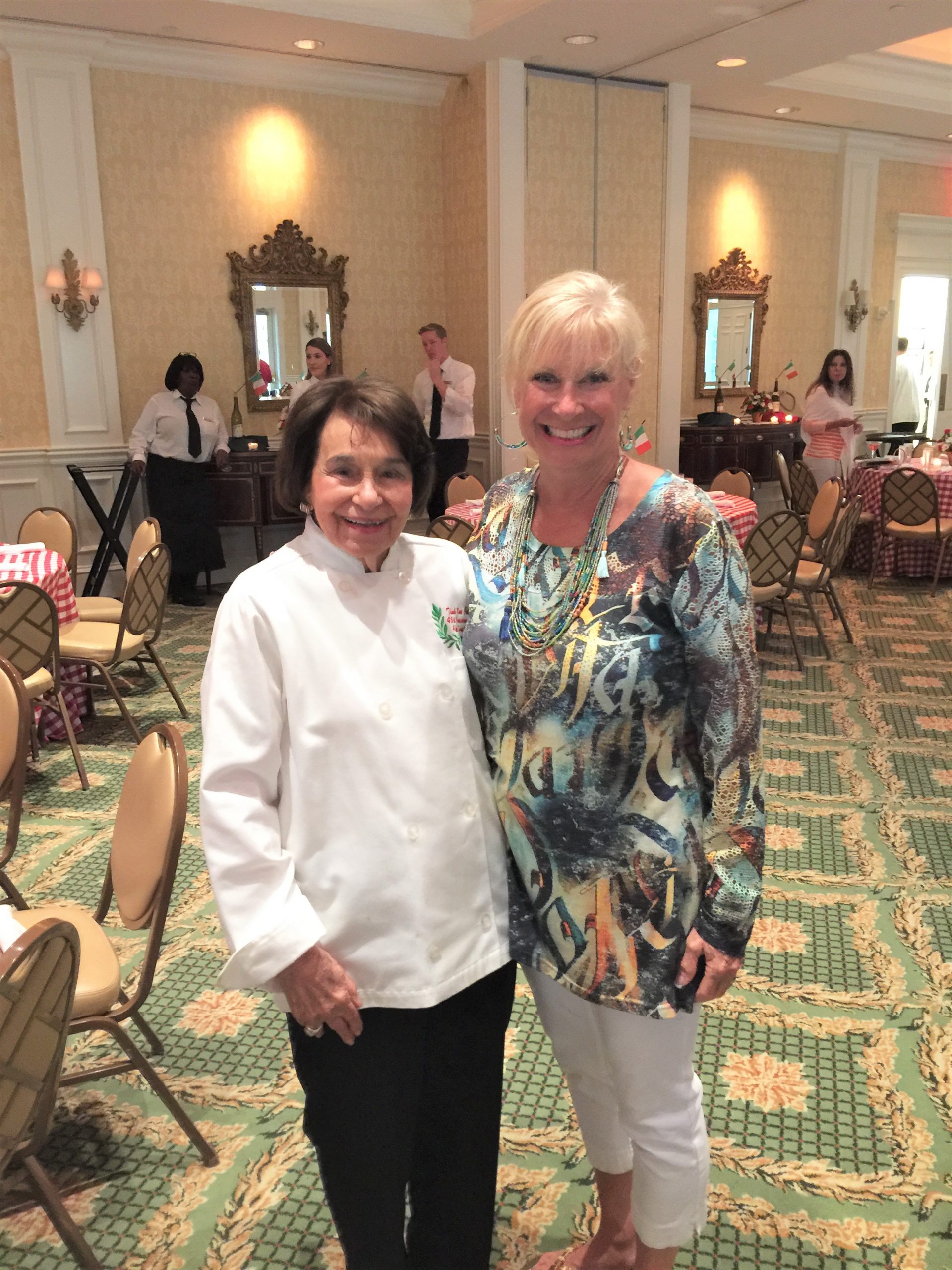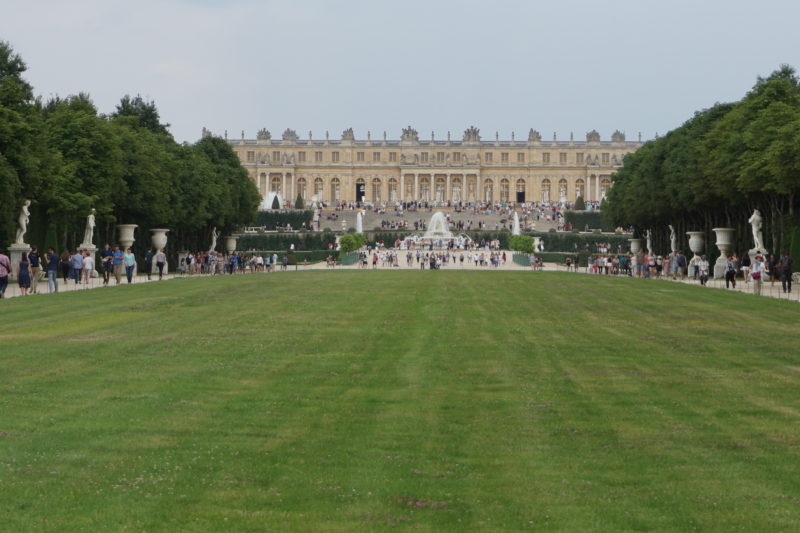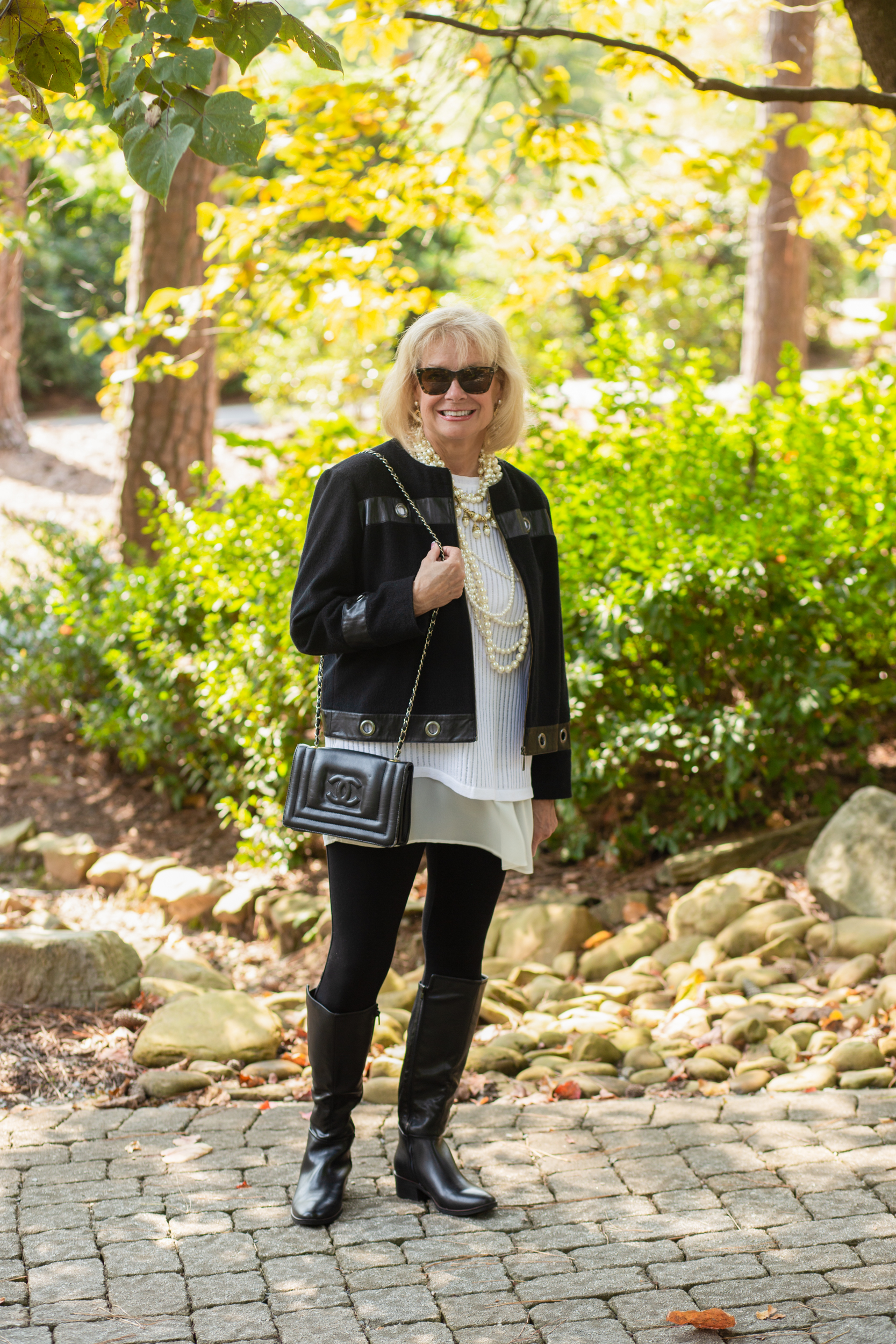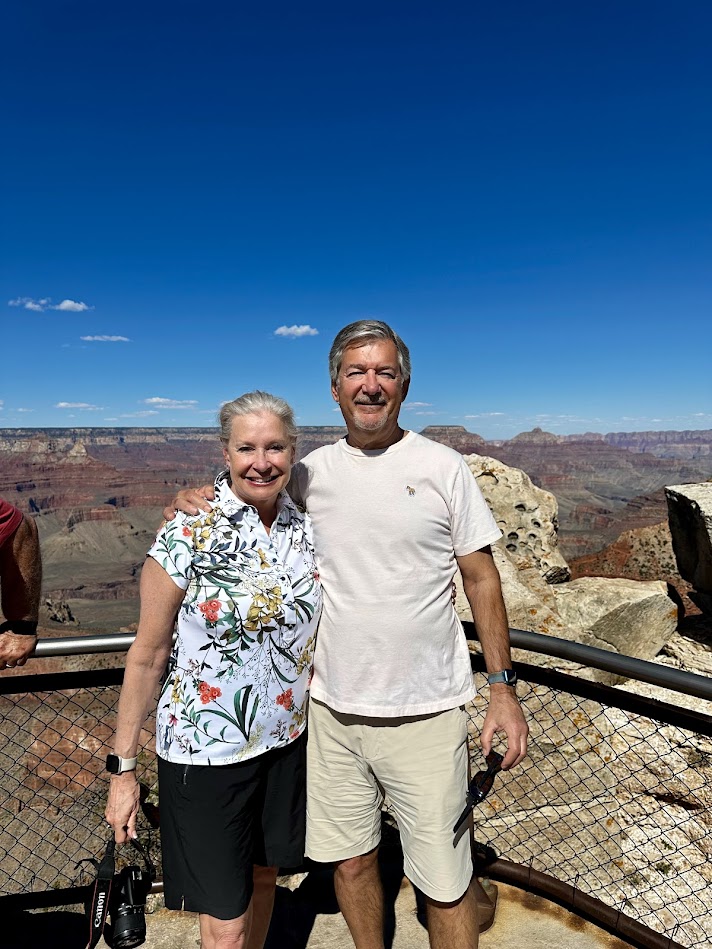The Castles on The Rhine River Cruise
Welcome back to the second part of my Rhine River Cruise. Today I’m sharing my favorite part of the cruise, the Castles on the Rhine River. But the first stop is in Cologne, Germany, and the majestic Cologne Cathedral.
Day 2- Cologne, Germany
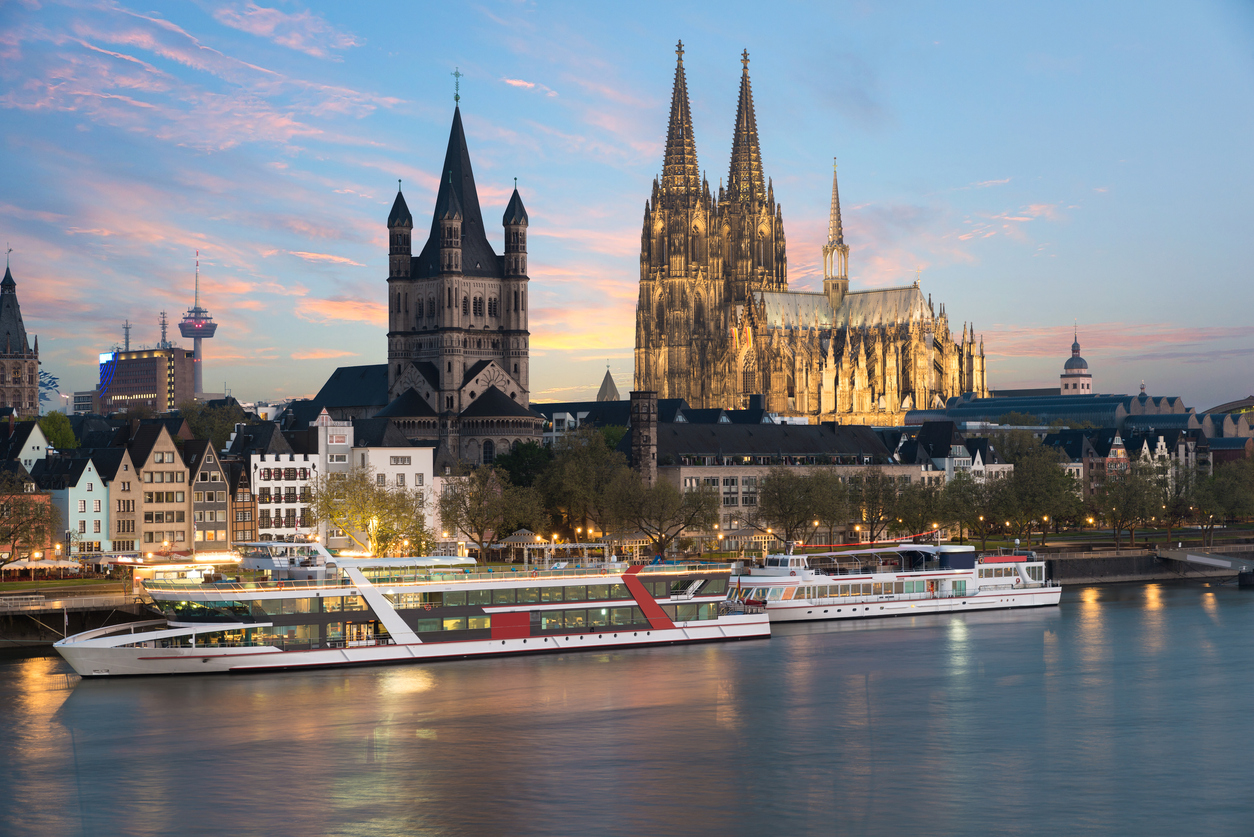
Our second day on the Avalon Rhine River cruise was spent in Cologne, Germany. Cologne is a 2,000-year-old city known for its Gothic-style architecture—its famous twin-spired cathedral and Old Town with many shops, cafés, and taverns.
Our walking tour guide met us in Old Town before we headed to the Cologne Cathedral.
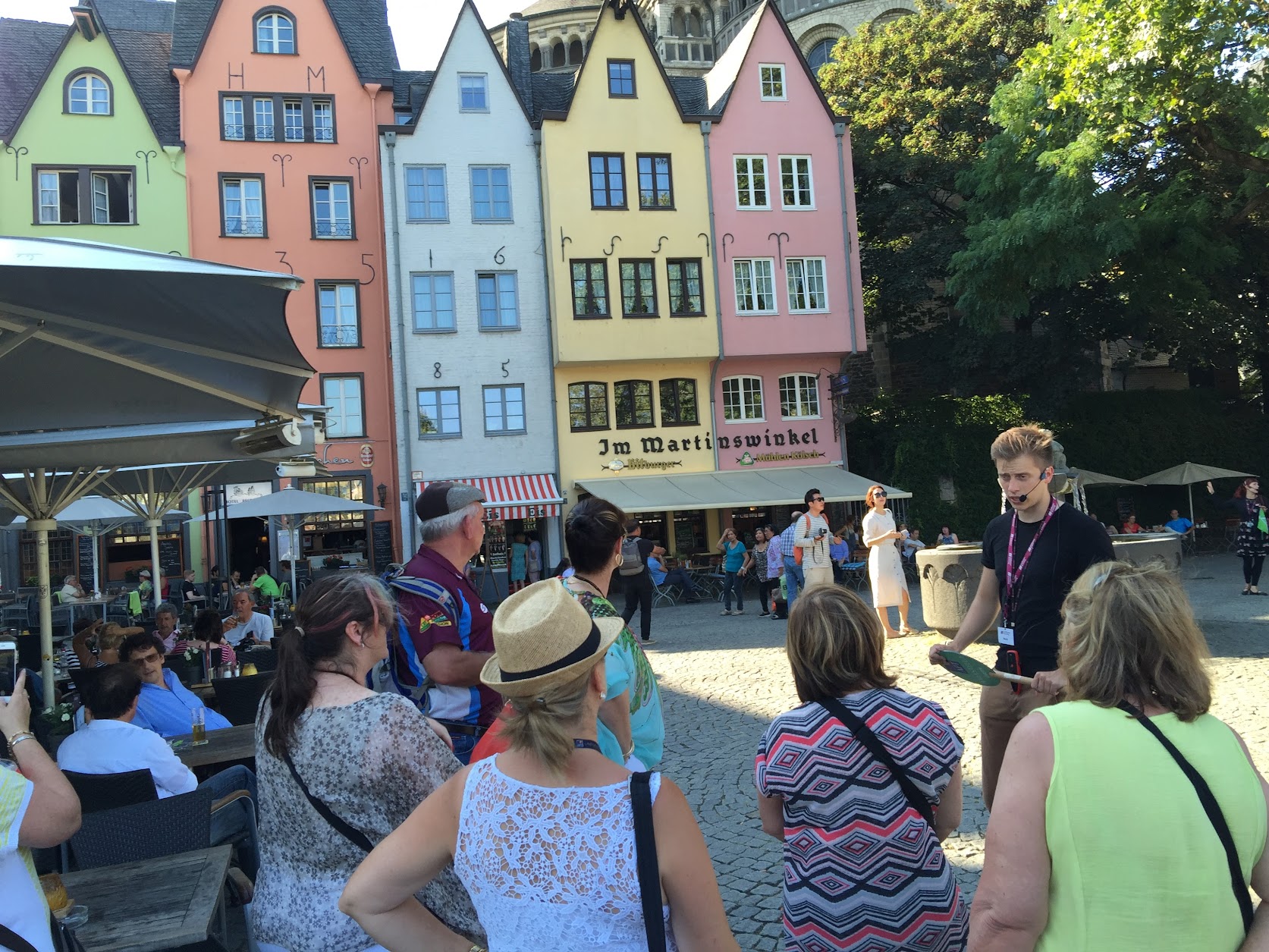
Cobblestone streets are so pretty in these European towns but hard on your feet!
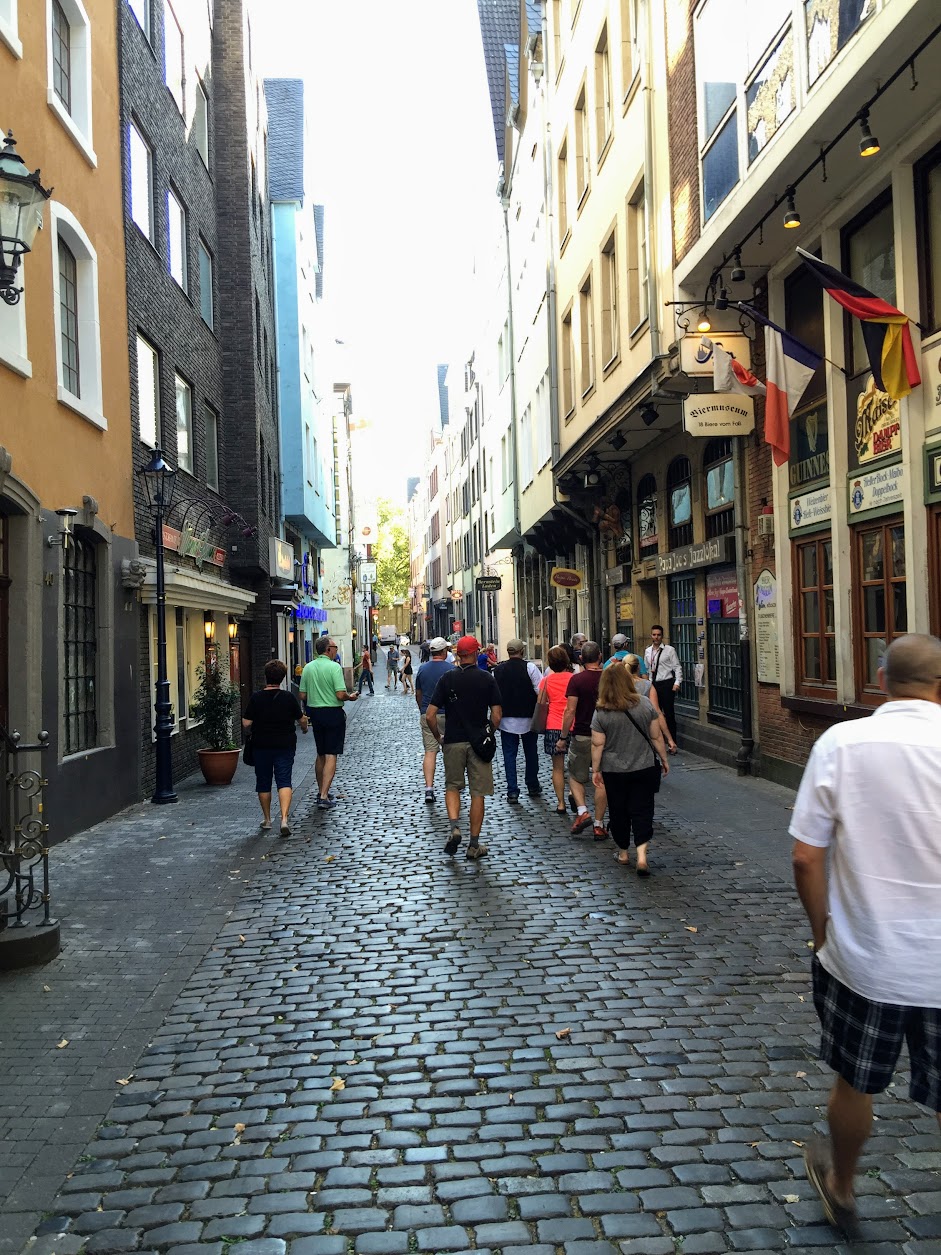
Colone Catherdral
At 515 ft, the Cologne Cathedral is the tallest twin-spired church in the world, the second tallest church in Europe after Ulm Minster, and the third tallest church of any kind in the world.It is the largest Gothic church in Northern Europe and has the second-tallest spires.
It is a renowned monument of German Catholicism and Gothic architecture and was declared a World Heritage Site in 1996. Wikipedia
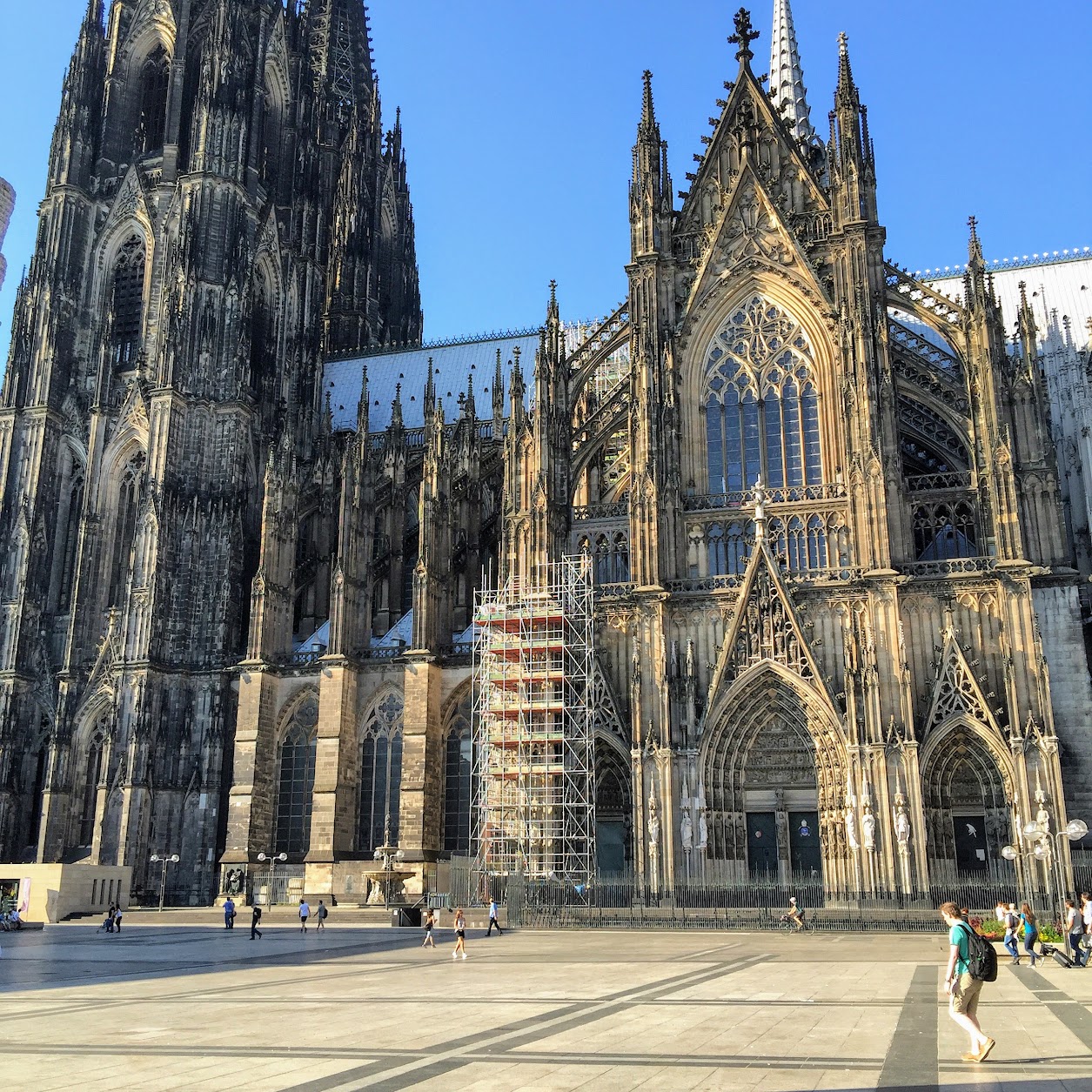
The Cologne Cathedral is Germany’s most visited landmark, attracting an average of 20,000 people a day, corresponding to seven to eight million a year. Entrance to the cathedral is free.
Fun Fact: During World War II, Cologne Cathedral was hit by 14 bombs, but the building did not fall. Repairs to the damaged parts were finally finished in 1956. However, some sections were deliberately left unprepared as a memorial to what had happened.
The shrine of the Three Wise Men
The true highlight of the cathedral was what led Cologne to such prominence during the Middle Ages, and indeed, many a Christian pilgrim has made the journey to Cologne purely for the chance to see the Shrine of the Three Wise Men.
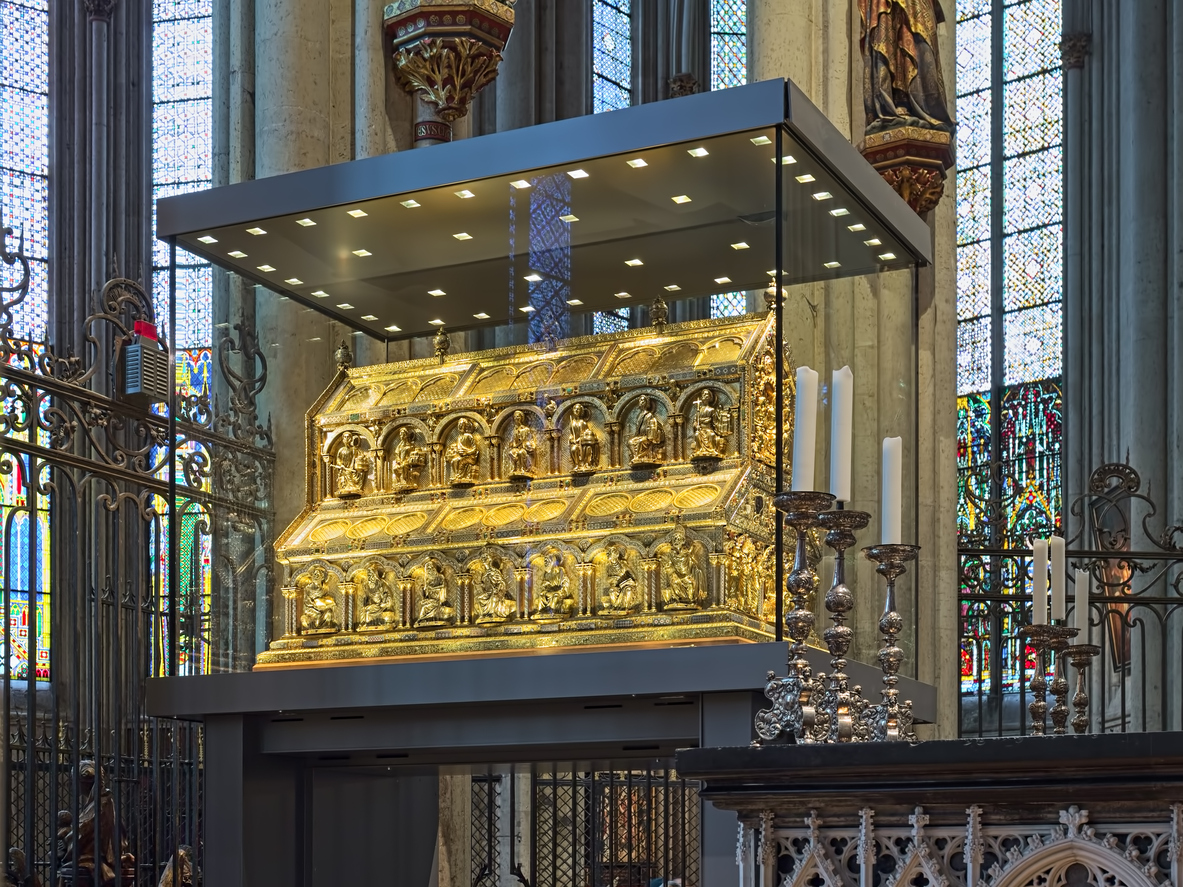
Traditionally believed that it contains the bones of the Biblical Magi. The famous medieval goldsmith Nicholas of Verdun designed the shrine and began work on it in 1180 or 1181. The Cologne Cathedral is Germany’s most visited landmark, attracting an average of 20,000 people a day, corresponding to seven to eight million a year. Entrance to the cathedral is free.
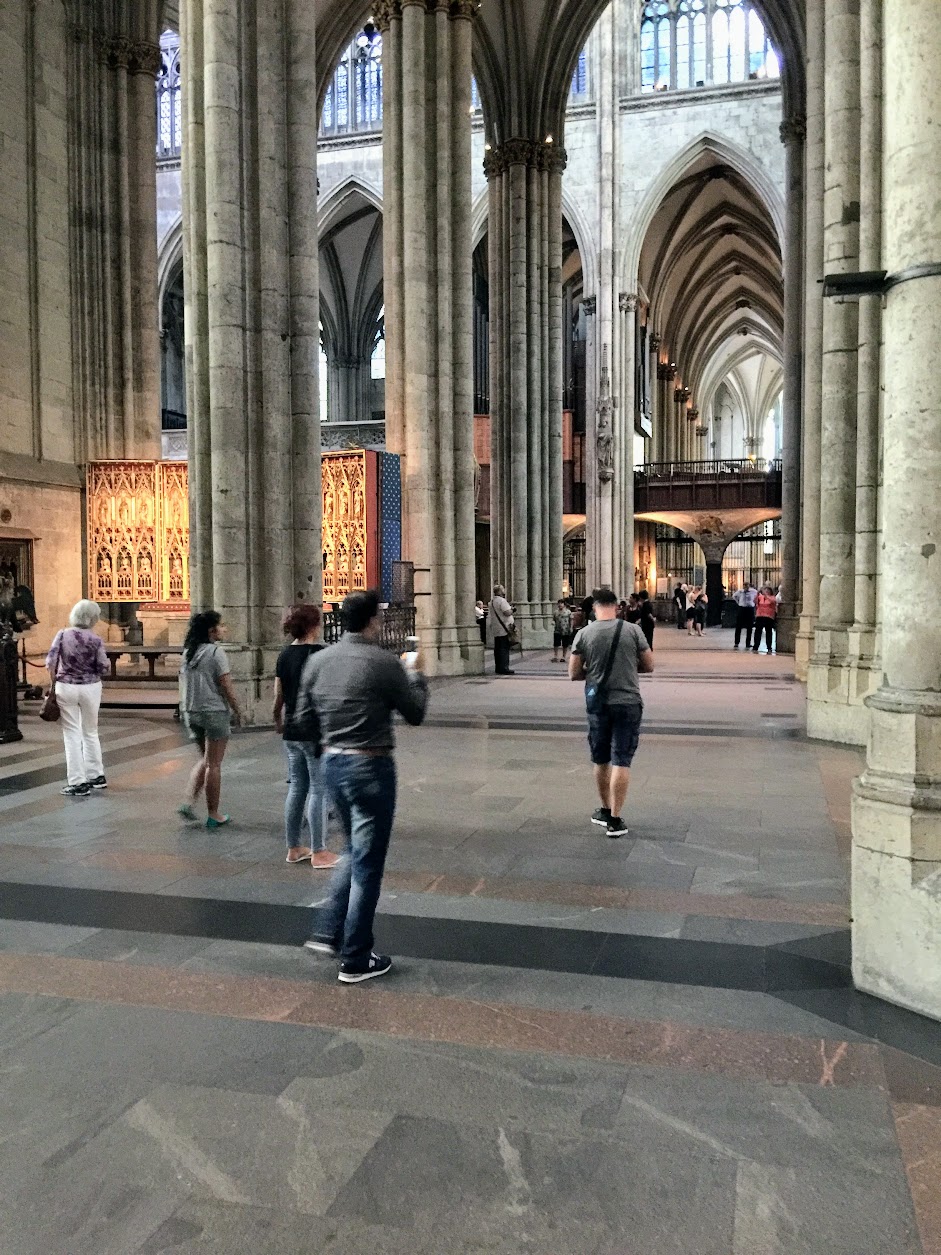
We had a wonderful day visiting Cologne. I enjoy watching the sunset from our boat. While we slept, we would arrive in Koblenz in the morning. I can’t wait to see the castles on the Rhine River tomorrow!
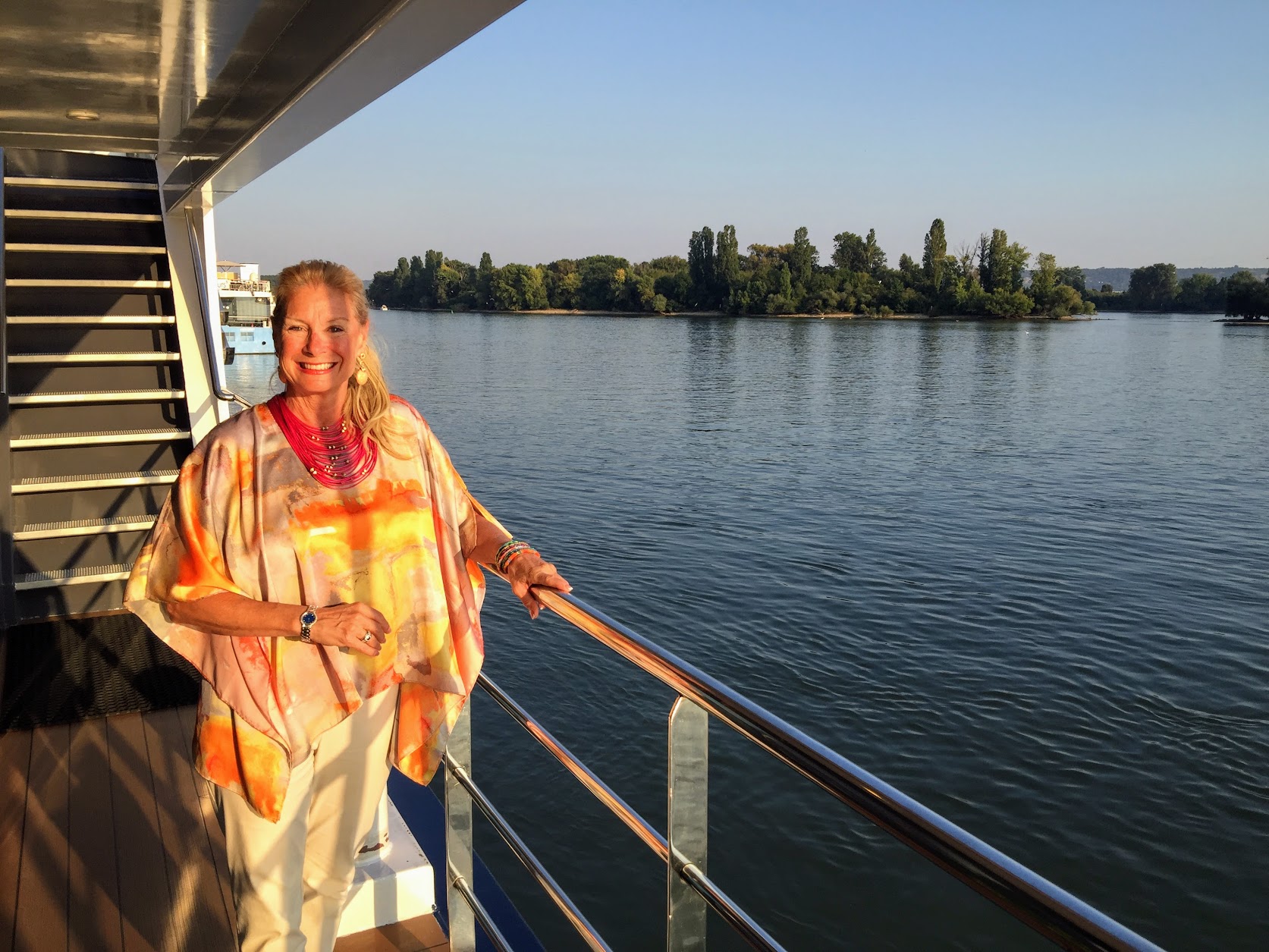
Day 3- Koblenz and the Castles on the Rhine River
The Mosel river joins the mighty Rhine at Koblenz – Germany’s oldest city. The city’s name comes from the Latin word for confluence, a reminder of the region’s Roman past.
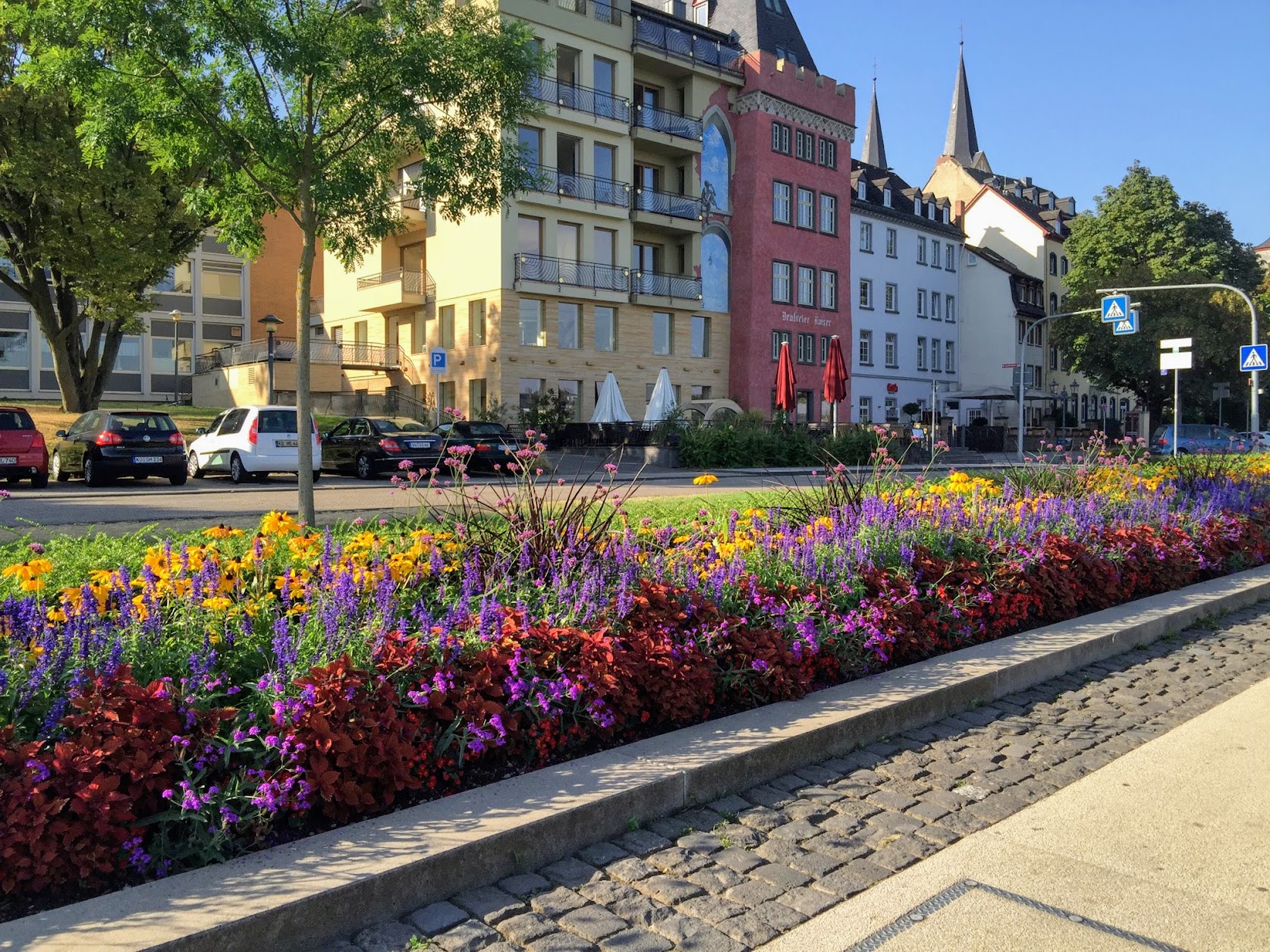
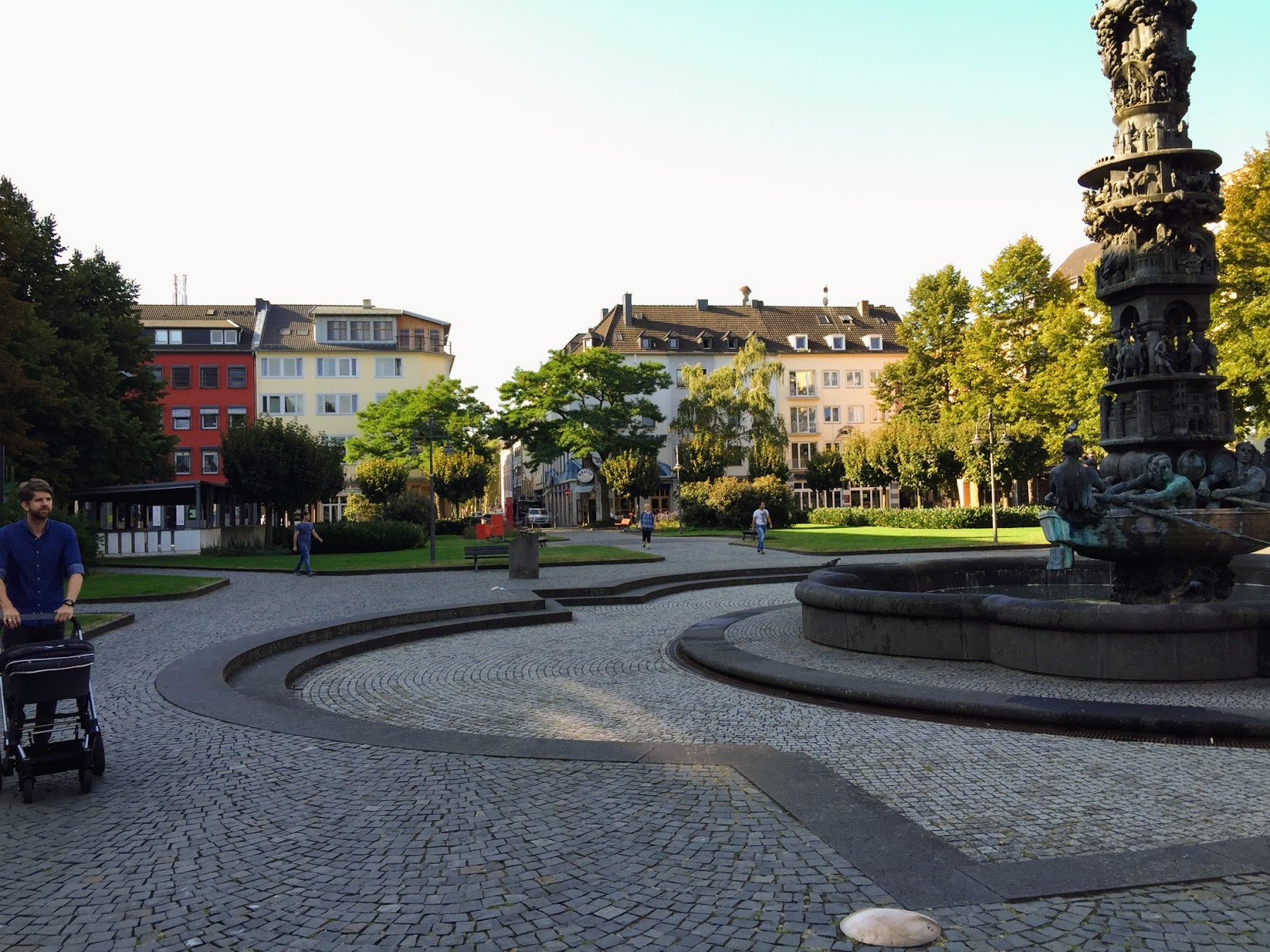
The confluence of the Moselle and Rhine Rivers has always had special meaning in Germany, as at this exact spot, there was an early commandery for the Teutonic Order.
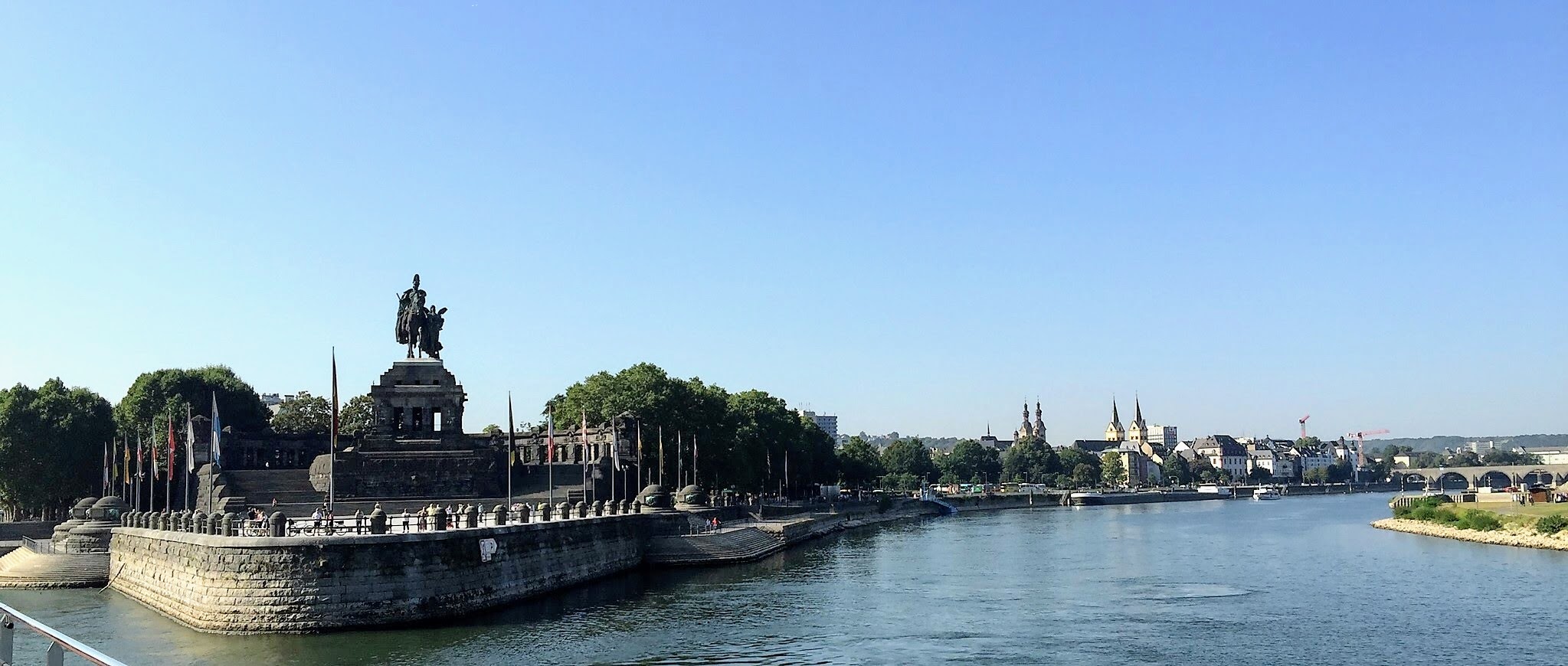
In 1897 a large-scale equestrian statue of Kaiser Wilhelm I was raised at this location nine years after the emperor’s death.
Ehrenbreitstein Fortress
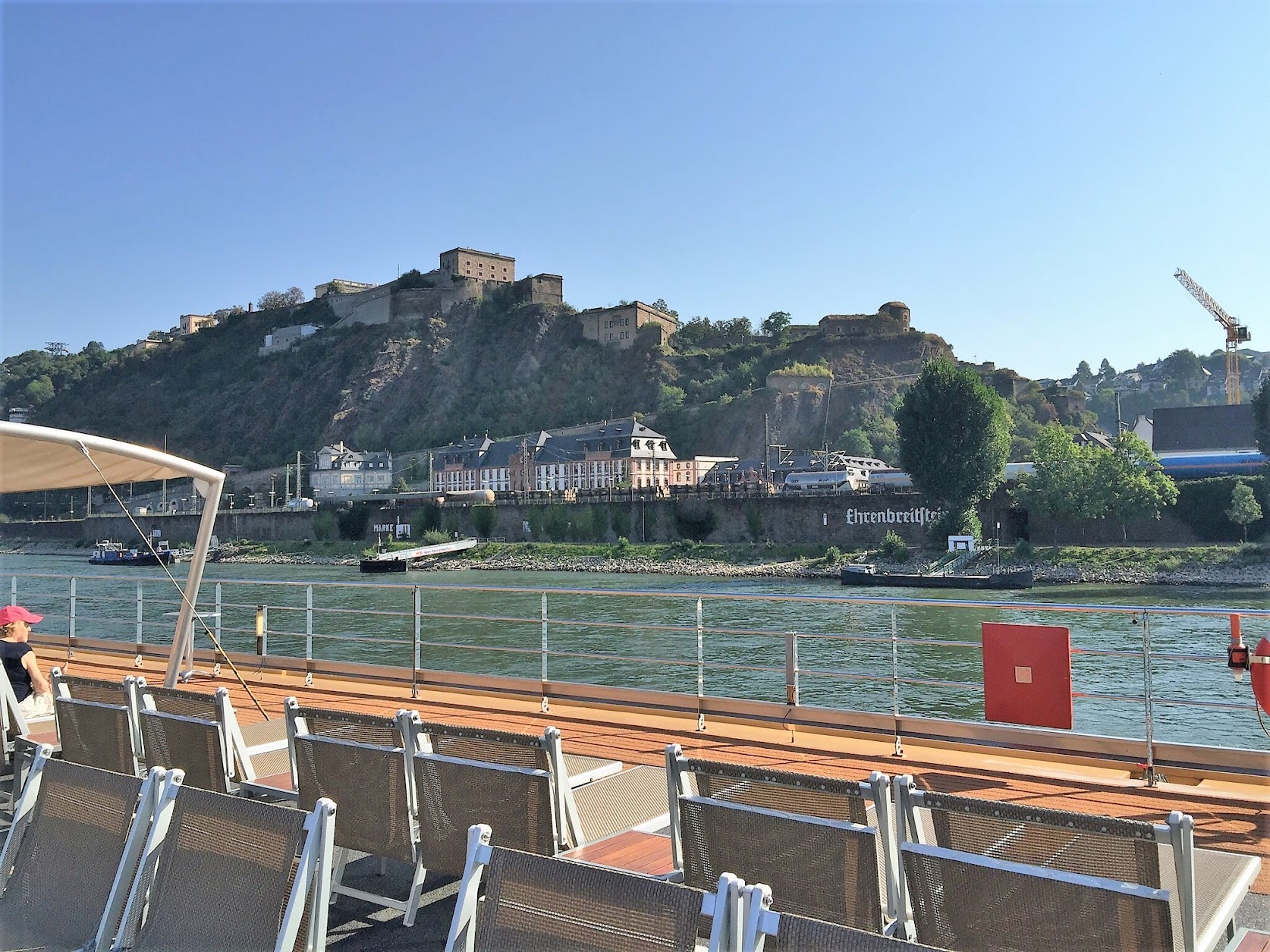
The Ehrenbreitstein Fortress towers on a hill across the river from Koblenz. The fort as it stands today was built in the early 19th century. It was used as a Prussian military base, though its origin dates back to a Conradine fortress from around 1000.
Stolzenfels Castle
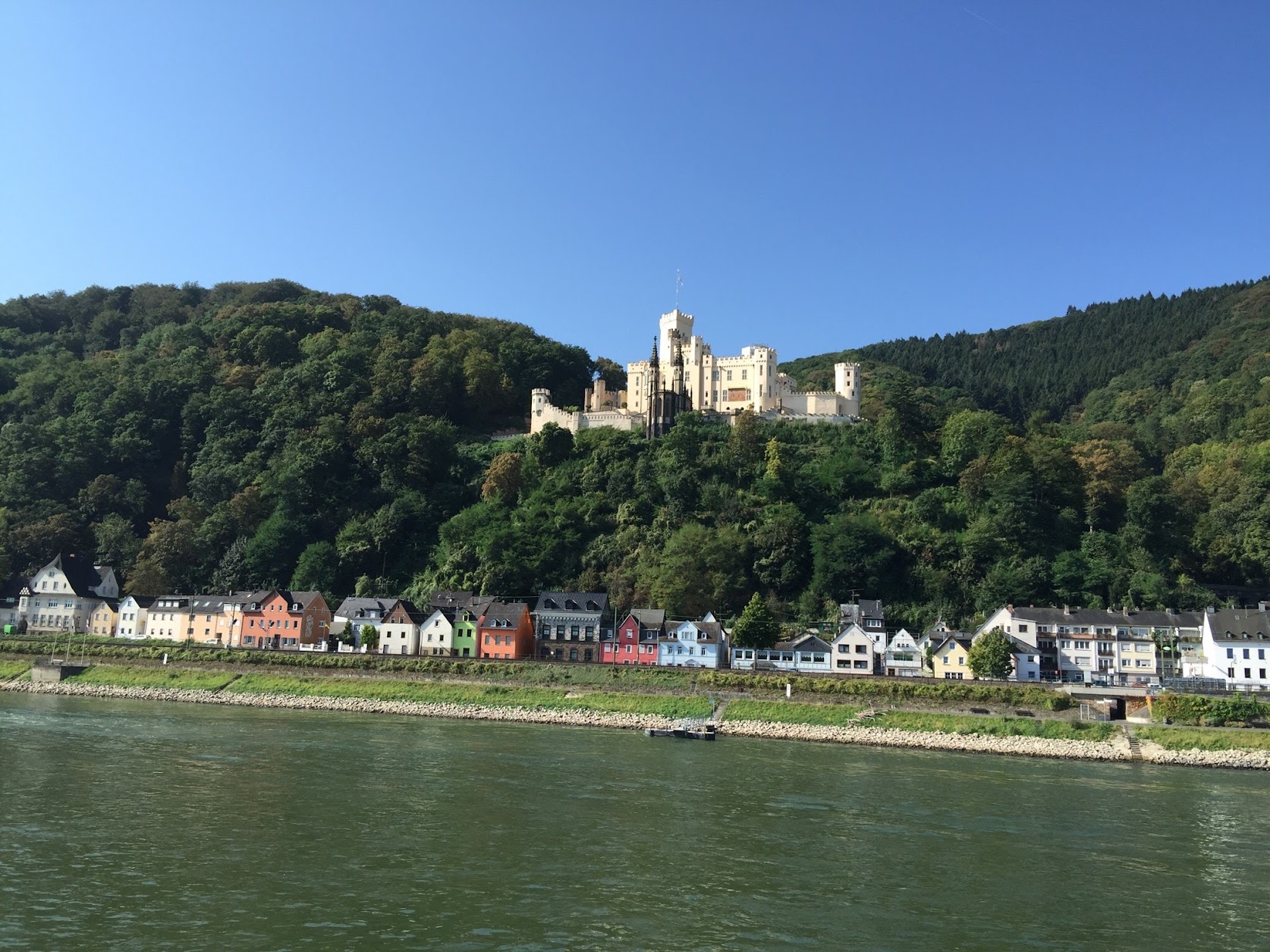
Stolzenfels Castle is nestled on a forested hillside on the left bank of the Rhine. The fortress castle is the epitome of the romantic atmosphere for which the Upper Middle Rhine Valley is known. Prussian Prince Frederick William had the palace rebuilt from its 13th-century ruins and created a prime example of Rhine Romanticism.
Marksburg Castle
The Marksburg Castle rises high above the right bank of the Rhine River, crowning a cone-shaped hill overlooking the town of Braubach. The Marksburg is the only castle on the Middle Rhine to escape destruction or ruin.
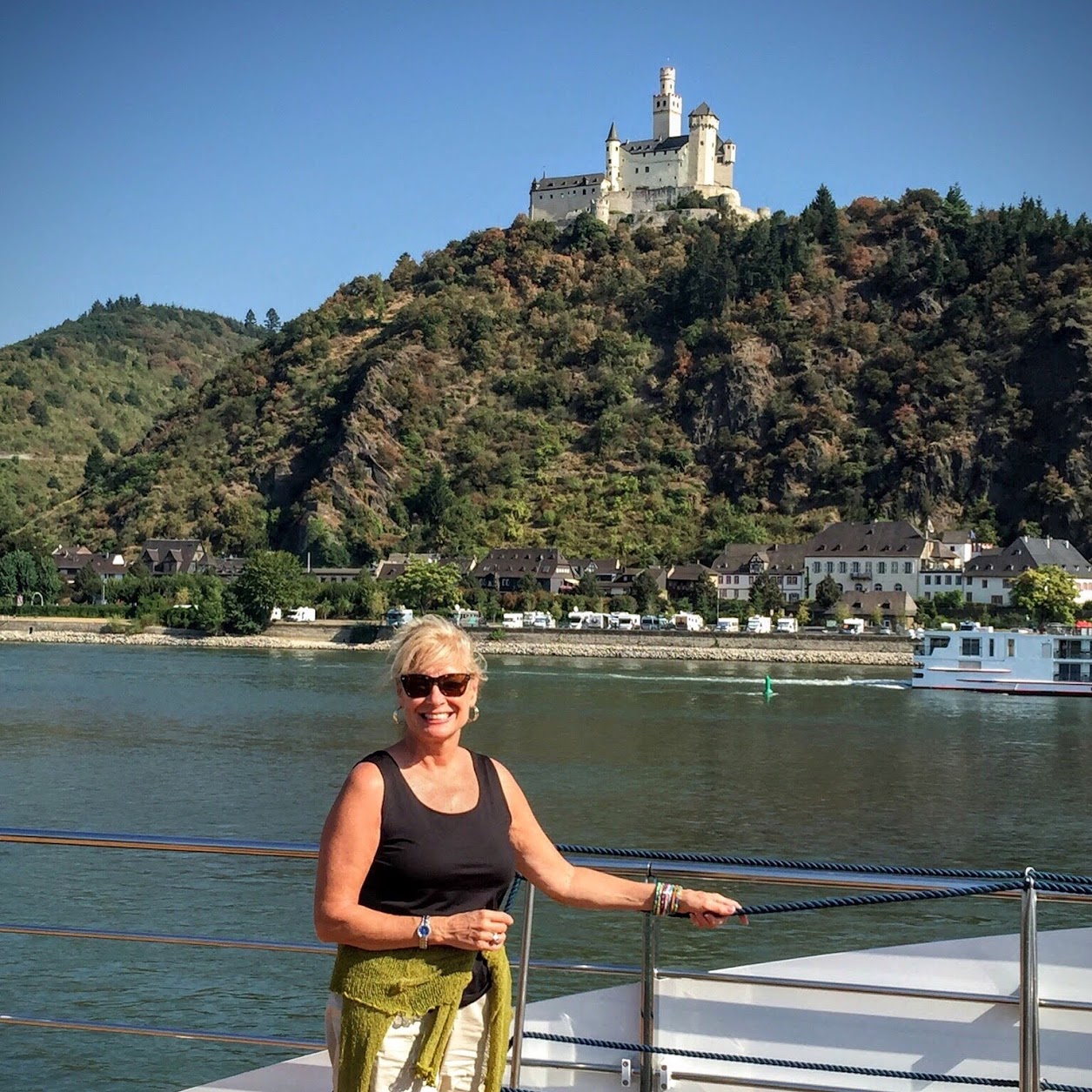
Maus Castle
Originally called St. Peterseck and later Burg Deuernburg (Thurnberg), the castle came to be known as Burg Maus due to the cat and mouse rivalry between the Catholic Church and the powerful counts of Katzenelnbogen. They owned nearby Katz Castle (Burg Neukatzenelnbogen).
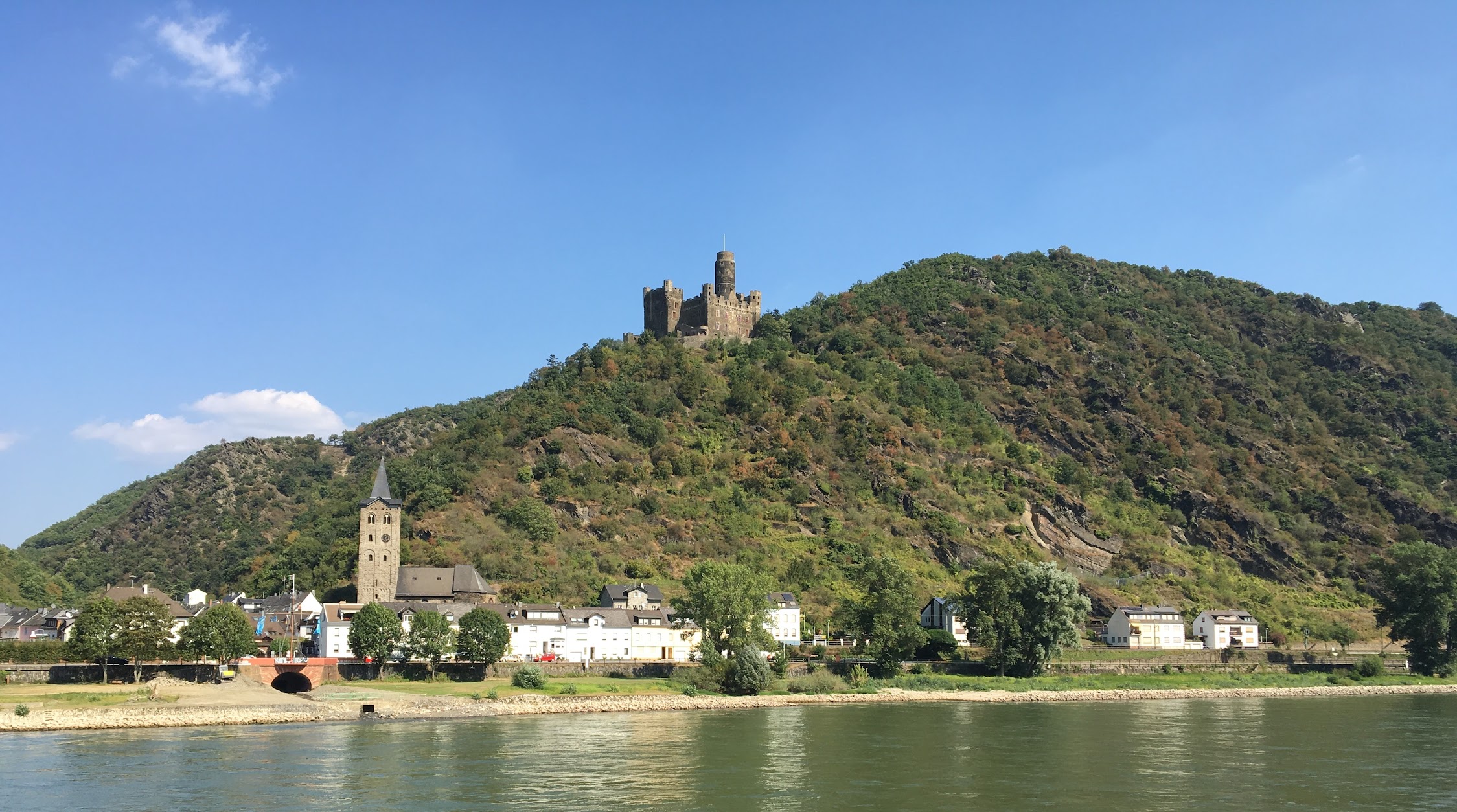
Katz Castle
Katz Castle resides atop a protruding hilltop between Rhine Valley and Forstbach Valley overlooking the Rhine River above the town of St. Goarshausen. The castle was constructed around 1371 by Count Wilhelm II of Katzenelnbogen.
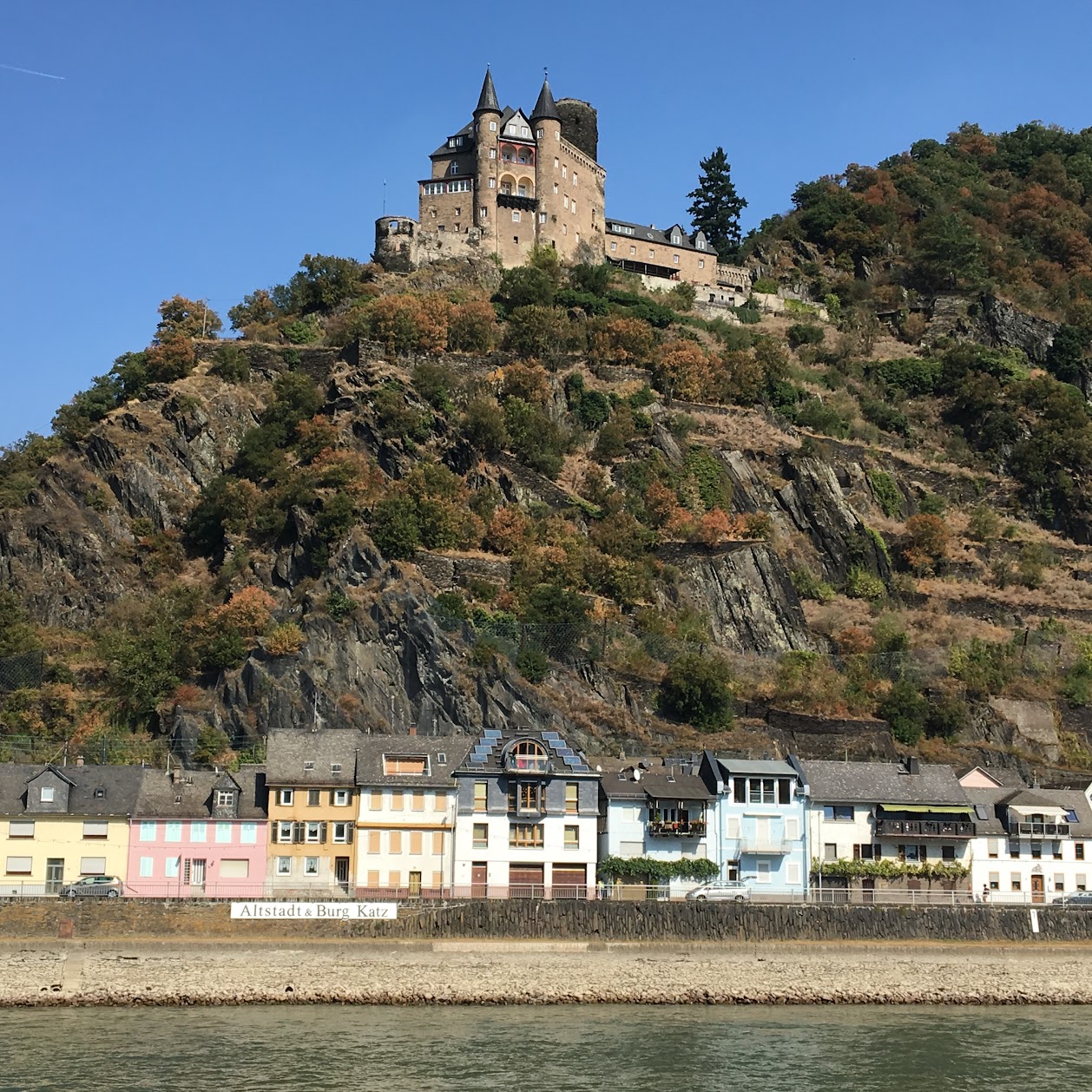
Rheinfels Castle
Rheinfels Castle is the largest and one of the most magnificent castle ruins on the Rhine River. Built in 1245 by Count Dieter V of Katzenelnbogen in St. Goar, Rheinfels Castle today represents the largest castle and fortress ruin on the Middle Rhine.
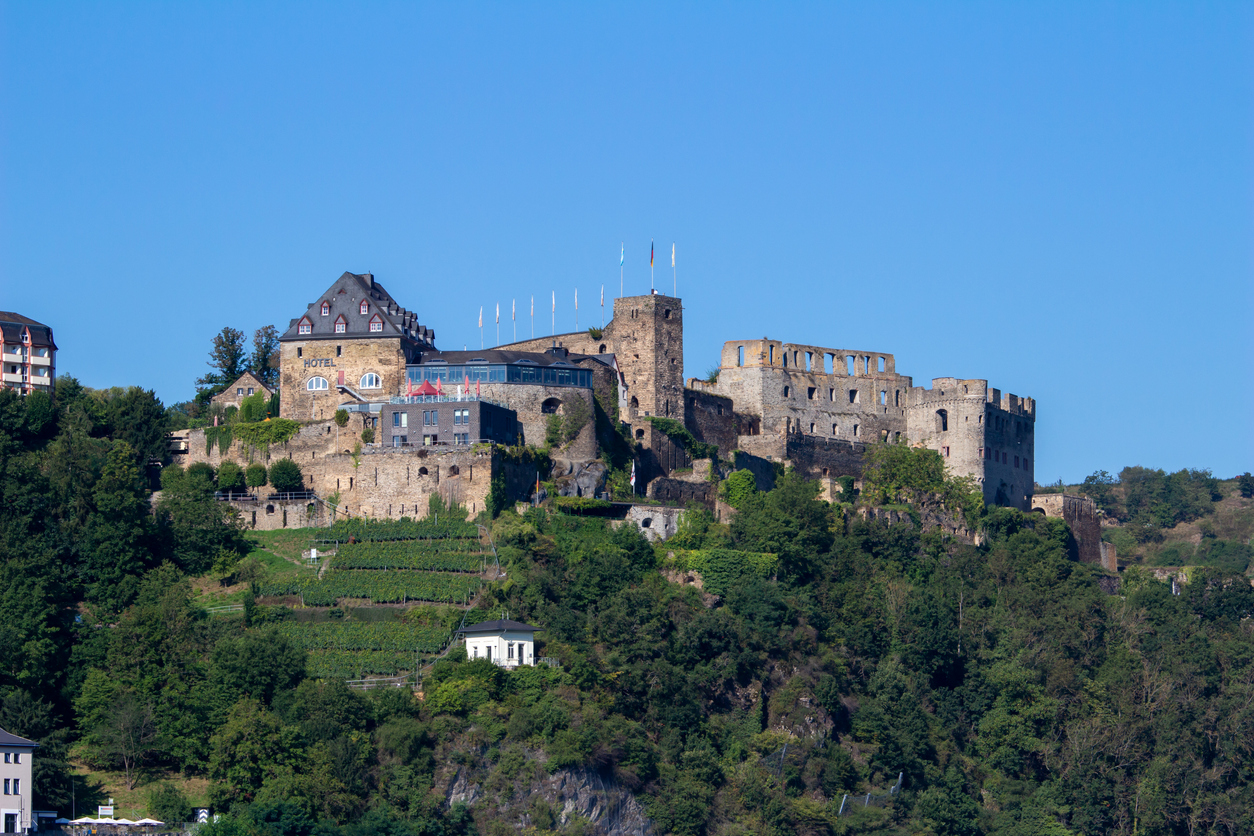
Schönburg Castle and Oberwesel
The Schönburg castle sits above the medieval town of Oberwesel in the Upper Middle Rhine Valley.
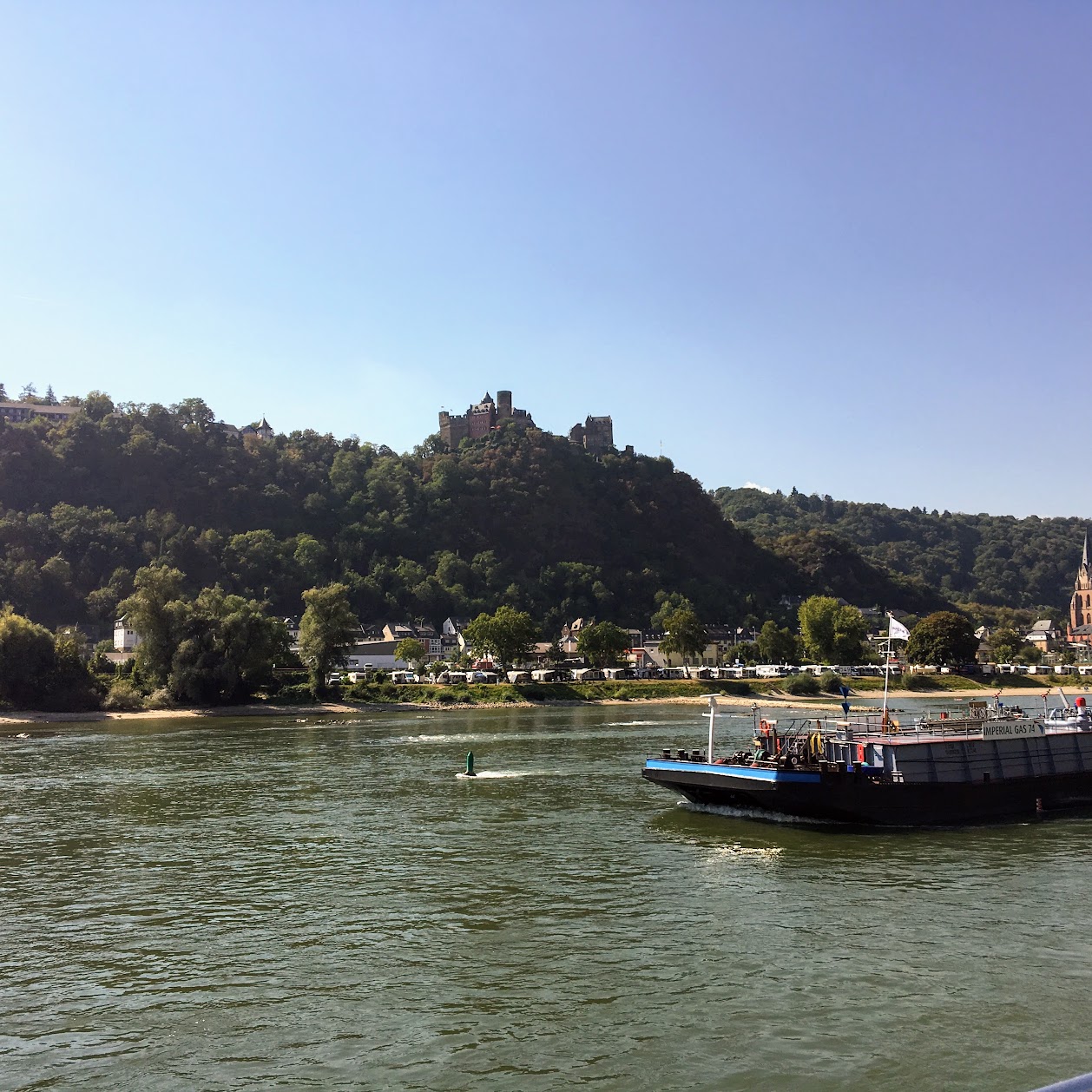
Oberwesel retains its medieval silhouette. Sixteen of the original 21 towers and much of the town wall still stand in the shadow of Schönburg Castle.

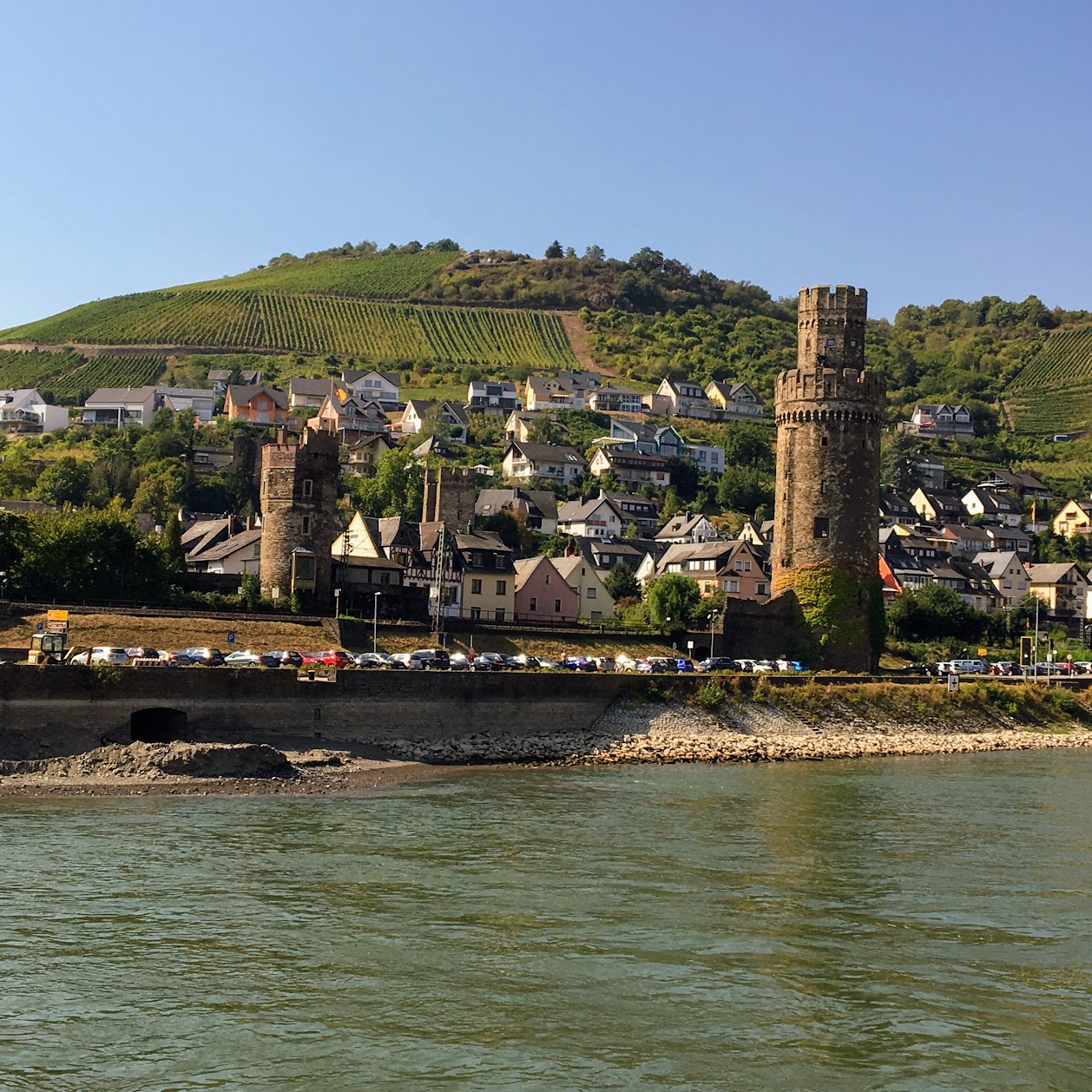
The “town of towers” is also renowned for its Riesling wines, which are celebrated during a festival held during the first half of September.
Pfalzgrafenstein Castle
On the tiny Pfalz Island in the middle of the Rhine River near Kaub, Germany, stands Pfalzgrafenstein Castle. It was built for the sole purpose of generating revenue from boats traveling along the river. While Pfalzgrafenstein is one of many toll castles on the Rhine, its location in the middle of the river on the tiny island renders it unique.
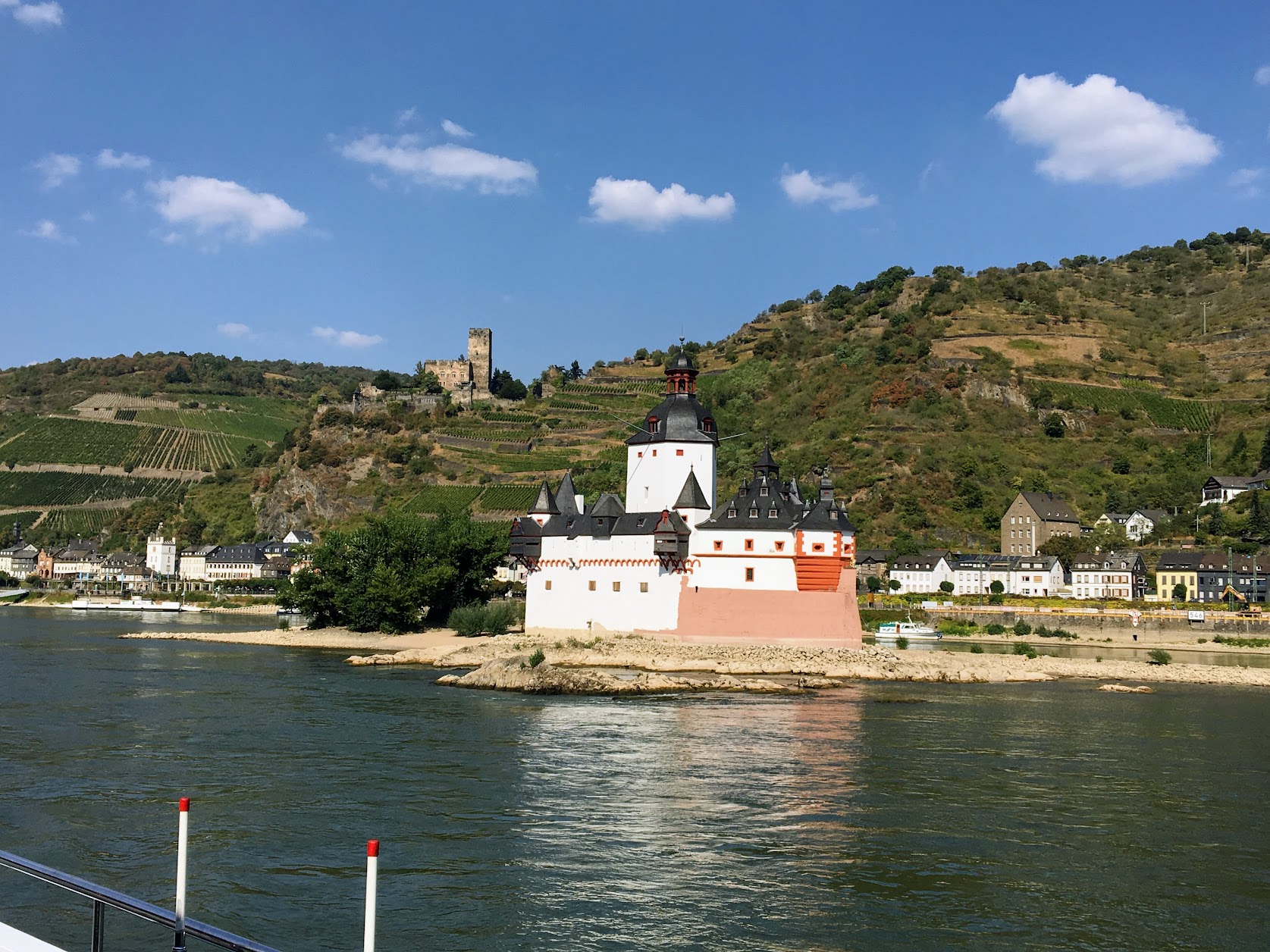
Reichenstein Castle
This large castle is a fine example of a reconstructed castle in the neo-Gothic style.
Reichenstein Castle was a notorious nest of robber barons. Illegal forays and seizures of territories, feuds, and other unlawfulness were not rare.
However, today Reichenstein Castle offers completely furnished palace rooms, castle catering, and a hotel.

Castle Soonek
Castle Sooneck was constructed as early as the 11th century and takes its name from nearby Soon Forest. It was built along with castles Reichenstein, Heimburg, and Vauzburg to protect the area around Niederheimbach, which was owned by the abbey of Cornelimunster.

Well, I hope you enjoyed seeing the castles on the Rhine River. Someday I would like to see more castles in Europe. History is so fascinating to me. How about you? Do you enjoy learning about history too?
Next up is the last part of my Rhine River cruise.
Until next time!



